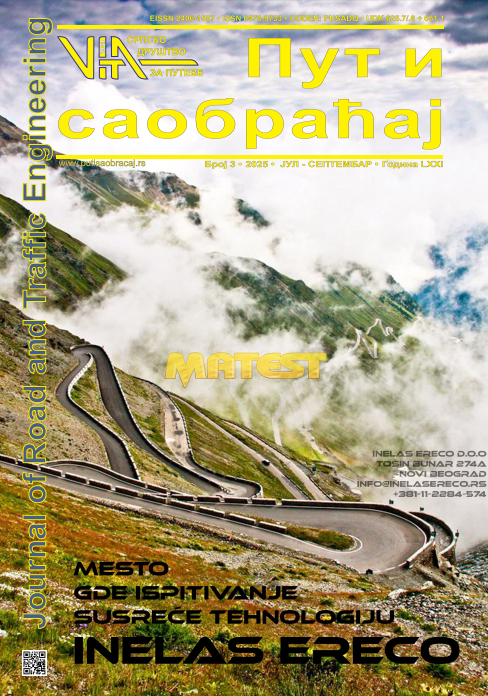The role of transport infrastructure in the sustainable development of mountainous areas in Serbia
Abstract
Spatial-functional changes are significantly influenced by transport infrastructure as a key factor in integrating mountainous areas into contemporary development processes and sustainability frameworks. This study presents an analysis of the impact of the road network on the transformation of these predominantly rural areas, with a focus on their connectivity to urban and tourist centers, as well as their role in adapting to social and environmental challenges. Special attention is given to the maintenance of roads under extreme climatic conditions (snowfall, rain, low air temperatures, ice, fog), occurrences of landslides, rockfalls, and other hazards. Multi-criteria analyses indicate potential approaches that can enhance the resilience and functionality of infrastructure within the objectives of sustainable development. The research findings highlight a direct correlation between the development of the transport network and changes in population mobility, access to public services, and economic activities in rural areas. The recommendations include strategies for long-term infrastructure management, considering the specific characteristics of mountainous regions.
Downloads
Copyright (c) 2025 Journal of Road and Traffic Engineering

This work is licensed under a Creative Commons Attribution-NonCommercial 4.0 International License.
Authors who publish with this journal agree to the following terms:
- Authors retain copyright and grant the journal right of first publication with the work simultaneously licensed under a Creative Commons Attribution License CC BY-NC that allows others to share the work with an acknowledgement of the work's authorship and initial publication in this journal.
- Authors are able to enter into separate, additional contractual arrangements for the non-exclusive distribution of the journal's published version of the work (e.g., post it to an institutional repository or publish it in a book), with an acknowledgement of its initial publication in this journal.
- Authors are permitted and encouraged to post their work online (e.g., in institutional repositories or on their website) prior to and during the submission process, as it can lead to productive exchanges, as well as earlier and greater citation of published work (See The Effect of Open Access).









